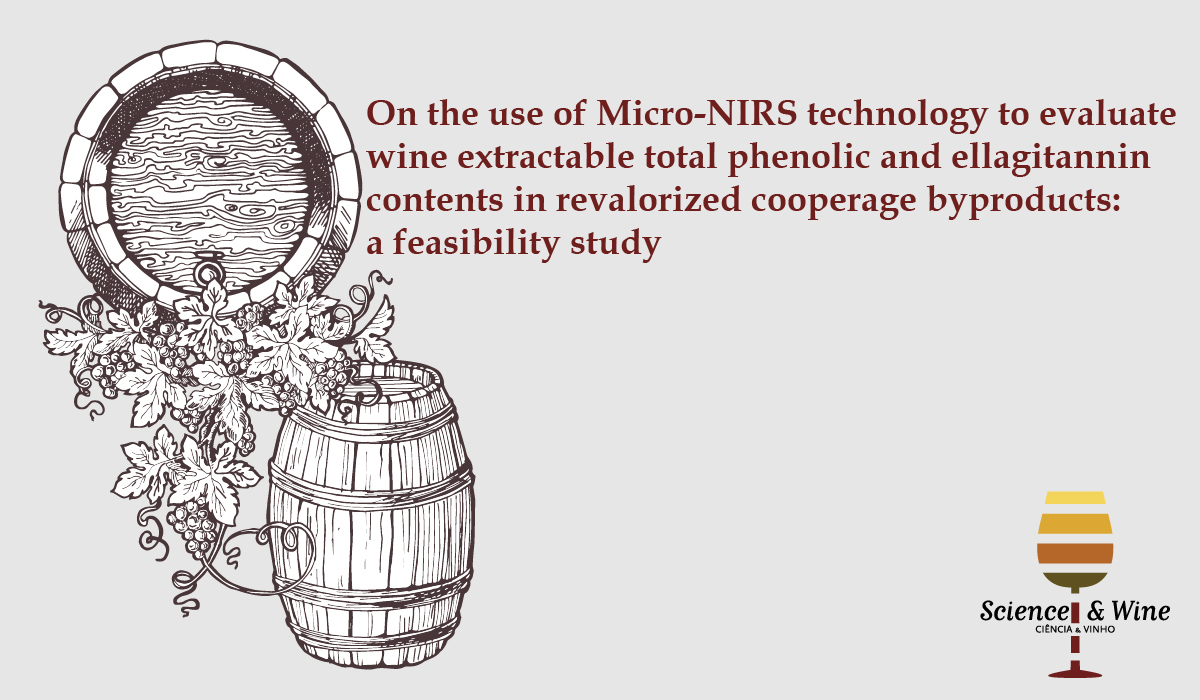By Berta Baca-Bocanegra, Julio Nogales-Bueno, Ignacio García-Estévez, María Teresa Escribano-Bailón, José Miguel Hernández-Hierro and Francisco José Heredia
The addition of commercial oak wood (Del Álamo, Nevares, Gallego, Martin, & Merino, 2008; Nevares, Del Alamo, Cárcel, Crespo, Martin, & Gallego, 2008) or wood compounds (Balík, Híc, Kulichová, Novotná, Tříska, Vrchotová, et al., 2017) has been aimed at implementing the production of high quality red wines in the last years. During the contact time, different types of oak compounds are released from the wood to the wine, thus affecting its organoleptic properties such as aroma, color or astringency. Among these compounds, ellagitannins, with several hydroxyl groups, can take part in oxidation reactions (García-Estévez, Alcalde-Eon, Martínez-Gil, Rivas-Gonzalo, Teresa Escribano-Bailón, Nevares, et al., 2017; Vivas & Glories, 1996) that may favor the polymerization reactions between flavanols and between flavanols and anthocyanins. Wood processing for the elaboration of barrels generates by-products that seem to be an interesting product in the oenological field due to its potential capacity of releasing high added-value compounds for wine. Predicting phenolic compounds of wood by-products and its extractability from the matrix to the hydroalcoholic medium could be important in the oenological industry.
Vibrational spectroscopy techniques represent emerging analytical procedure, which is enjoying increasing popularity in the industry as non-destructive, environmental friendly and rapid technique. A new generation of portable/handheld NIR spectrometers (Figure 1) have been developed within the last years. These systems incorporate the analytical precision for chemical identification and quantitation with a spectral resolution equivalent to bench-top instruments, allowing for flexibility for in-plant analysis since the unit can be easily carried and transferred. In the agro-food industry, the potential of this technique has been highlighted for assessing the quality of fruits nondestructively in the field under different weather conditions (Abu Izneid, Fadhel, Al-Kharazi, Ali, & Miloud, 2014; Antonucci, Pallottino, Paglia, Palma, D’Aquino, & Menesatti, 2011; Camps, Simone, & Gilli, 2012).
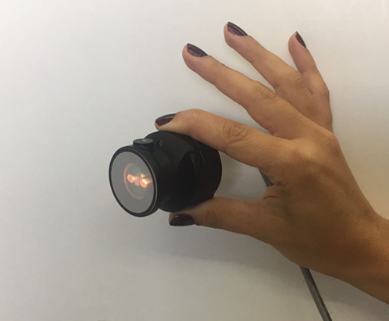
To carry out this study, American non-toasted oak (Quercus alba L.) shavings, cooperage byproduct, provided by Toneleria Salas S.L. were used. In order to achieve representative sample sets, the samples were taken at 4 different points of the barrel manufacturing process were chosen: automatic sawing of the staves (A), manual sawing of the staves (B), shaving of the staves (C) and shaving the edges of the barrels (D). Samples were collected periodically, between June of 2015 and January of 2016. Two hundred samples were collected during the aforesaid period. Sample selection was made in order to reduce the number of samples maintaining as much spectral variety as possible. After that, a like-wine model solution was used for the simulated maceration procedure (Figure 2).
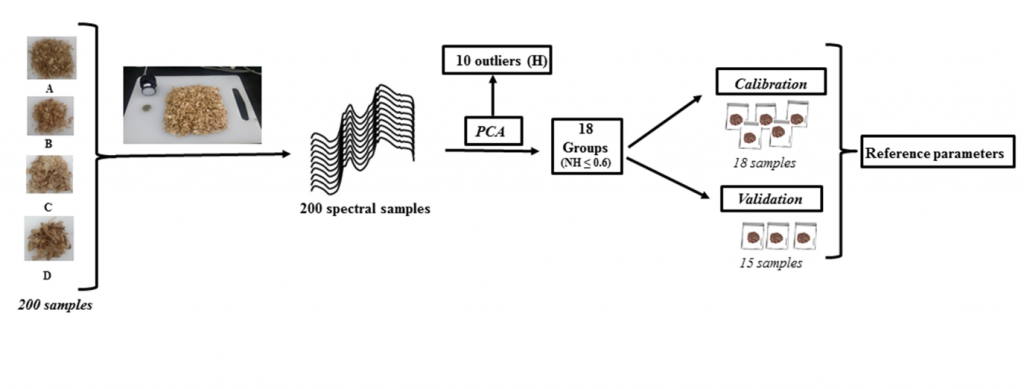
Using the raw spectral data, applying spectral pretreatments and allocating the corresponding extractable total phenolic content and extractable ellagitannin content to each sample, calibrations were performed by modified partial least squares regression (MPLS). Quantitative calibrations were developed by modified partial least squares (MPLS) regression. Extractable total phenolic content and extractable ellagitannin content were used as dependent (Y) variables and the matrix of 18 wood processed spectra was used as the independent (X). The obtained models present an adequate accuracy to determine the extractable content of total phenols and ellagitannins (as individual extractable castalagin, vescalagin, grandinin, and roburin E or total extractable ellagitannins).
The aforesaid models were used to predict the extractable content of total phenols and total ellagitannins in the whole of the wood set. The results show that both extractable phenolic content and extractable ellagitannin content describe a similar to Gaussian bell-shaped distribution for longitudinal and transversal wood sample sets (Figure 3).
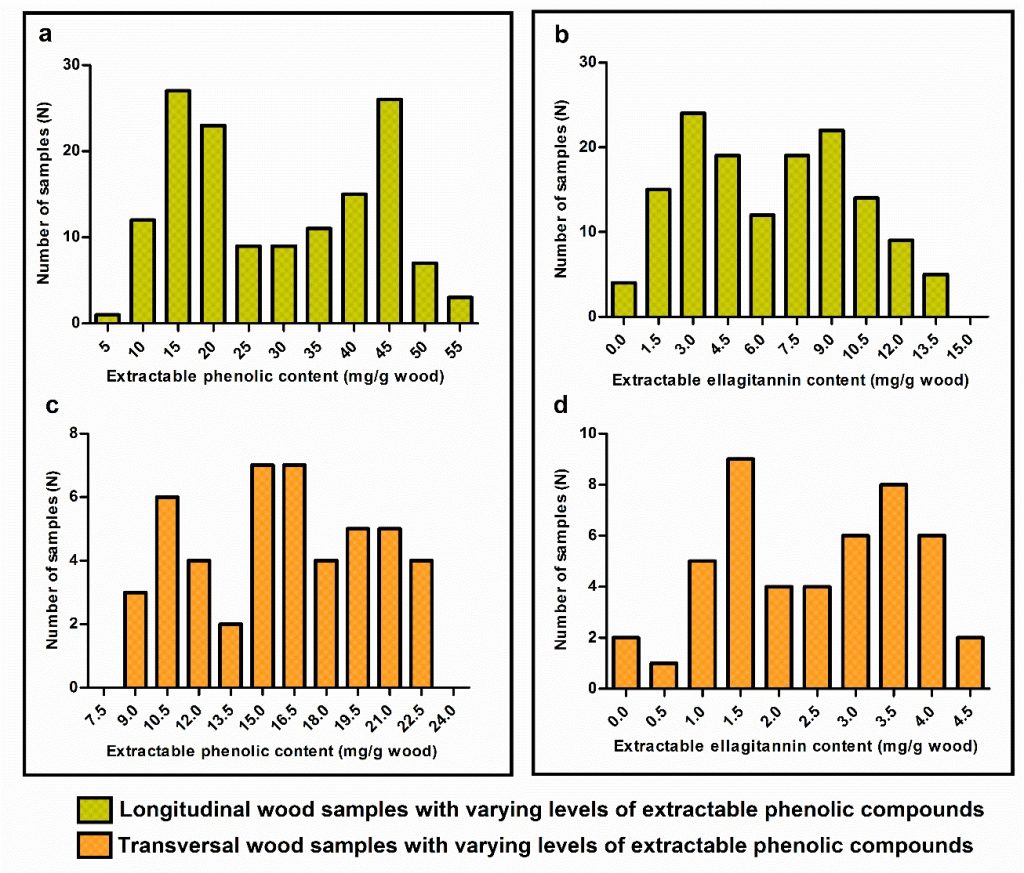
The obtained results confirmed that spectral analysis developed from Micro-NIRS could be used as a technique for in situ routine screening of the extractable polyphenolic compounds in wood cooperage byproduct. This methodology was able to predict, in situ, the extractable polyphenolic content of a sample based on spectral features as the predictor variables. The obtained results are comparable with those obtained using other bench-top devices and present the advantage of its eventual friendly use out of lab (Baca-Bocanegra, Nogales-Bueno, Hernández-Hierro, & Heredia, 2018). The use of a portable micro-spectrometer implies very interesting features since at a lower cost objective and instantaneous spectroscopic measurements can be carried out in situ with the advantage of its portability, due to its small size.

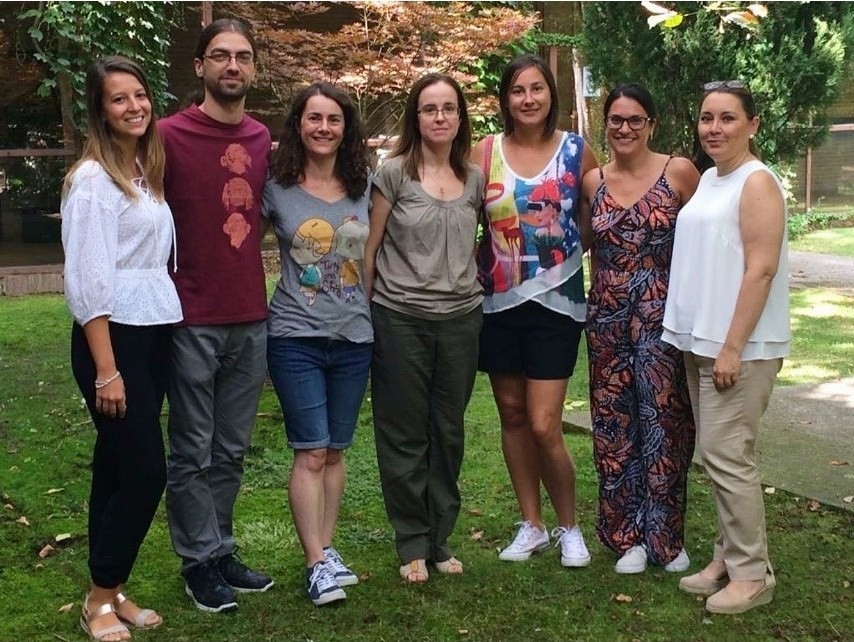
References:
- Abu Izneid, B., Fadhel, M. I., Al-Kharazi, T., Ali, M., & Miloud, S. (2014). Design and develop a nondestructive infrared spectroscopy instrument for assessment of mango (Mangifera indica) quality. Journal of Food Science and Technology-Mysore, 51(11), 3244-3252.
- Antonucci, F., Pallottino, F., Paglia, G., Palma, A., D’Aquino, S., & Menesatti, P. (2011). Non-destructive Estimation of Mandarin Maturity Status Through Portable VIS-NIR Spectrophotometer. Food and Bioprocess Technology, 4(5), 809-813.
- Baca-Bocanegra, B., Nogales-Bueno, J., García-Estévez, I., Escribano-Bailón, M. T., Hernández-Hierro, J. M., & Heredia, F. J. (2019). Screening of Wine Extractable Total Phenolic and Ellagitannin Contents in Revalorized Cooperage By-products: Evaluation by Micro-NIRS Technology. Food and Bioprocess Technology, 12(3), 477-485.
- Baca-Bocanegra, B., Nogales-Bueno, J., Hernández-Hierro, J. M., & Heredia, F. J. (2018). Evaluation of extractable polyphenols released to wine from cooperage byproduct by near infrared hyperspectral imaging. Food Chemistry, 244, 206-212.
- Balík, J., Híc, P., Kulichová, J., Novotná, P., Tříska, J., Vrchotová, N., Strohalm, J., Lefnerová, D., & Houška, M. (2017). Musts with Increased Lignan Content Through Addition of Lignan Extracts. Food and Bioprocess Technology, 10(7), 1367-1373.
- Camps, C., Simone, C., & Gilli, C. (2012). Assessment of Tomato Quality Using Portable NIR Spectroscopy and PLSR with Wavelengths Selection. Acta Horticulturae, 936, 437-442.
- Del Álamo, M., Nevares, I., Gallego, L., Martin, C., & Merino, S. (2008). Aging markers from bottled red wine aged with chips, staves and barrels. Anal Chim Acta, 621(1), 86-99.
- García-Estévez, I., Alcalde-Eon, C., Martínez-Gil, A. M., Rivas-Gonzalo, J. C., Teresa Escribano-Bailón, M., Nevares, I., & del Alamo-Sanza, M. (2017). An Approach to the Study of the Interactions between Ellagitannins and Oxygen during Oak Wood Aging. Journal of Agricultural and Food Chemistry, 65(31), 6369-6378.
- Nevares, I., Del Alamo, M., Cárcel, L. M., Crespo, R., Martin, C., & Gallego, L. (2008). Measure the Dissolved Oxygen Consumed by Red Wines in Aging Tanks. Food and Bioprocess Technology, 2(3), 328-336.
- Vivas, N., & Glories, Y. (1996). Role of oak wood ellagitannins in the oxidation process of red wines during aging. American Journal of Enology and Viticulture, 47(1), 103-107.

